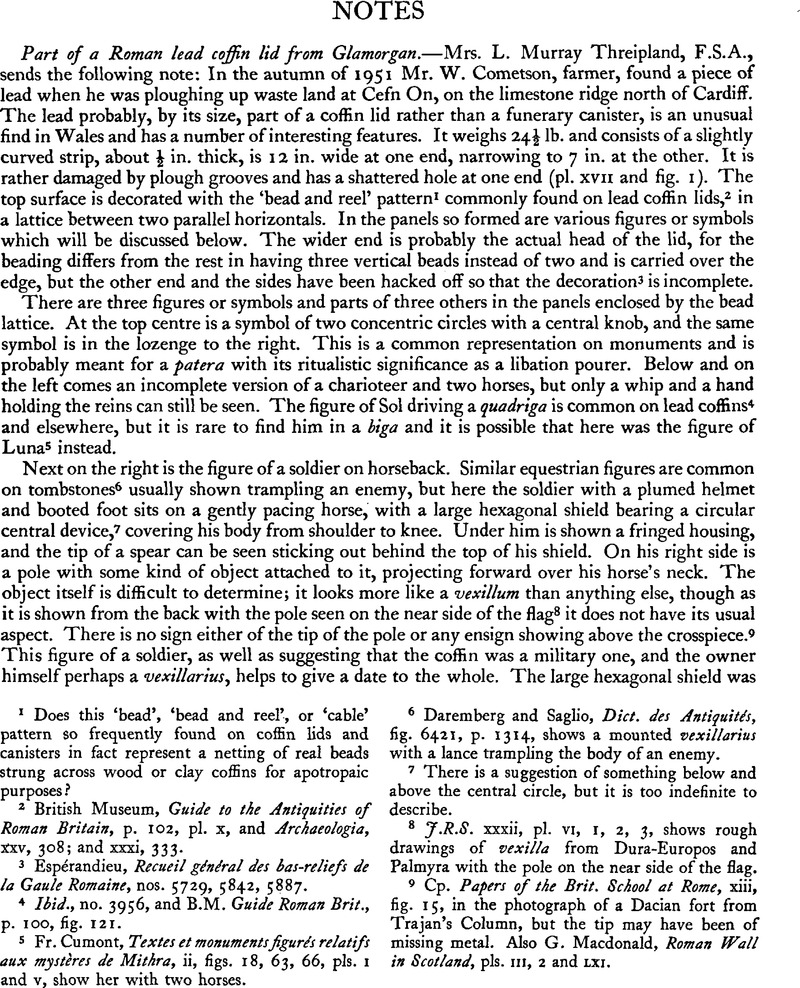Article contents
Part of a Roman lead coffin lid from Glamorgan
Published online by Cambridge University Press: 29 November 2011
Abstract

- Type
- Notes
- Information
- Copyright
- Copyright © The Society of Antiquaries of London 1953
References
page 72 note 1 Does this ‘bead’, ‘bead andreel’, or ‘cable’ pattern so frequently found on coffin lids and canisters in fact represent a netting of real beads strung across wood or clay coffins for apotropaic purposes?
page 72 note 2 British Museum, Guide to the Antiquities of Roman Britain, p. 102,Google Scholar pl. x, and Archaeologia, xxv, 308; and xxxi, 333.
page 72 note 3 Espérandieu, , Recueilgénéral des bas-reliefs de la Gaule Romaine, nos. 57291, 5842, 5887.Google Scholar
page 72 note 4 Ibid., no. 3956, and B.M. Guide Roman Brit., p. 100, fig. 121.
page 72 note 5 Fr. Cumont, , Texteset monuments figurés relatifs aux mystères de Mithra, ii, figs.18,Google Scholar 63, 66, pls. 1 and v, show her with two horses.
page 72 note 6 Daremberg, and Saglio, , Dict. des Antiquités, fig. 6421, p. 1314,Google Scholar shows a mounted vexillarius with a lance trampling the body of an enemy.
page 72 note 7 There is a suggestion of something below and above the central circle, but it is too indefinite to describe.
page 72 note 8 J.R.S. xxxii, pl. vi, 1, 2, 3, shows rough drawings of vexilla from Dura-Europos and Palmyra with the pole on the near side of the flag.
page 72 note 9 Cp. Papers of tie Brit. School at Rome, xiii, fig. 15, in the photograph of a Dacian fort from Trajan's Column, but the tip may have been of missing metal. Also Macdonald, G., Roman Wall in Scotland, pls. III,Google Scholar 2 and LXI.
page 73 note 1 Coussin, P., Les Armes romaines, pp. 394 f. 403 f.Google Scholar
page 73 note 2 Archaeologia, xxi, 2, 308 dates one found at Bow by associated coins to the fourth or fifth centuries A.D.
page 73 note 3 Guide to Roman Britain, p. 101.
page 74 note 1 Guide to Roman Britain, p. 102, pl. x.
- 1
- Cited by


